International Women's Day: 8 incredible women from Brighton and Hove
and live on Freeview channel 276
The city's tourism board, VisitBrighton, has teamed up with Louise Peskett, a Brighton author who works at the city's museums and as a guide at the Royal Pavilion, to shine a light on influential women from Brighton and Hove.
Here Louise highlights the stories of eight incredible women on International Women's Day.
Advertisement
Hide AdAdvertisement
Hide AdFrom some of Britain's first women doctors to suffragettes, entrepreneurs to entertainers, artists, music-hall stars, and campaigners, Brighton and Hove has always attracted women
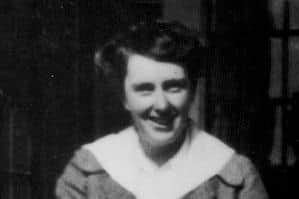

who dare do things differently. The city has been the birthplace, workplace and stage of women who have pushed boundaries, refused to say no and forged new territory in all walks of life.
Where else would you find a blue plaque to ‘mother of modern witchcraft’ Doreen Valiente, the first British woman to swim the Channel Mercedes Gleitze, Britain’s first female cabinet minister Margaret Bondfield, and pioneering mental health specialist Dr Helen Boyle all within a short walk of each other?
Here are just eight women from the city’s rich and eventful women’s history whose legacy lives on today.
1. Dr Octavia Wilberforce 1888 – 1963
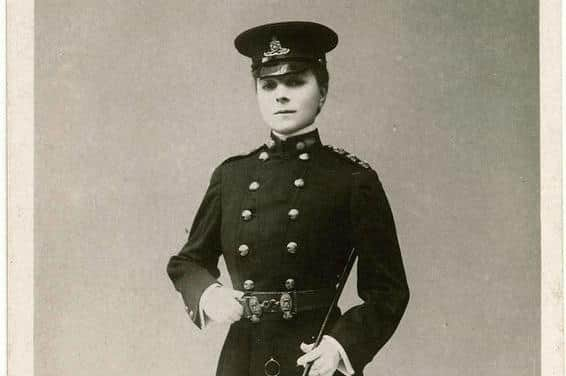

Advertisement
Hide AdAdvertisement
Hide AdWhen Octavia Wilberforce was born in Petworth, women doctors were a rare breed and her fate, becoming one of Brighton’s first female GPs, was very much not written in the stars. A high-born débutante, she was expected to keep her head down and behave herself, marrying into the nobility and living the leisured life of an upper-class wife.
However, Octavia decided that the life of a lady of leisure was not to her liking after all. Far better, she thought, to ‘be of use to the community’, as she described it, and become a doctor, too.
Her family could not have been less thrilled. They gave Octavia an ultimatum: either drop the ridiculous idea of becoming a ‘lady-doctor’ or lose her inheritance. But Octavia’s mind was made up. She proceeded to jilt her fiancé, defy her family and enrol at the London School of Medicine for Women, graduating in 1920.
In 1913, Octavia and American actress, writer and women’s rights campaigner, Elizabeth Robins opened a retreat in Henfield. There they helped many suffragettes recover their health after enduring the brutal regime of force-feeding in prison.
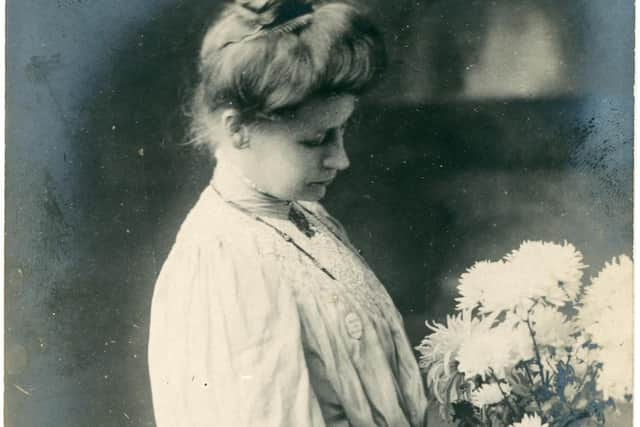

Advertisement
Hide AdAdvertisement
Hide AdIt’s unlikely Octavia ever regretted her shocking step. Her long and successful career encompassed becoming head physician at the town’s cutting edge New Sussex Hospital for Women and Children, treating Virginia Woolf, establishing a convalescent home for overworked professional women and opening her own practice in Montpelier Crescent where she was recently commemorated by a blue plaque.
Have you read: Amazing response from community after Portslade business launches collection for Ukraine |
2. Vesta Tilley 1864 – 1952
In the world of the Edwardian music-hall there was no one more successful, famous, or cheeky than entertainer and male impersonator, Vesta Tilley.
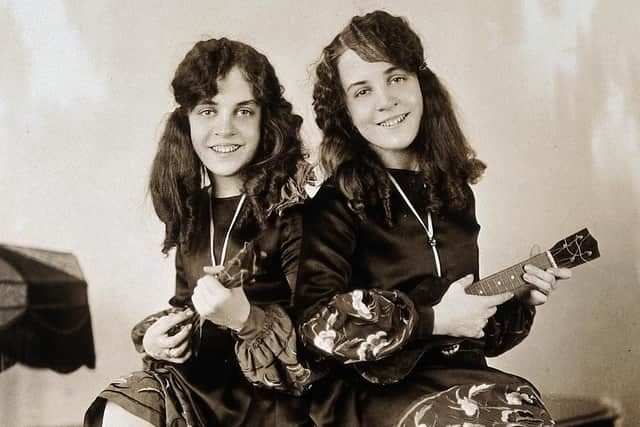

On stages all over the country, including Brighton’s Hippodrome and the Theatre Royal, Vesta thrilled audiences by dressing as a judge, a policeman, a soldier or the upper-class ‘Burlington Bertie’, performing comic sketches and songs with more than a hint of nudge-nudge-wink-wink. In the buttoned-up world of Edwardian England, Vesta challenged taboos and had legions of fans. Her route to the top, which had started on the music hall circuit as a child from a working-class family, gave her the gift of reaching out to everyone. No wonder she became the most highly paid female entertainer on the British stage.
Advertisement
Hide AdAdvertisement
Hide AdDuring the early days of the First World War, Vesta, dressed as a soldier, put her act to the service of army recruiting, singing songs such as ‘We Don’t Want To Lose You But We Think You Ought To Go’, sometimes urging men to come onto the stage and join up there and then. She was described as ‘Britain’s Best Recruitment Sergeant’.
However, Vesta wasn’t everyone’s cup of tea. During the 1912 Royal Command performance, Queen Mary and her entourage preferred to look away during Vesta’s act rather than watch the shocking sight of a woman in trousers.
In 1919 Vesta hung up her trousers for good and following her husband’s death, she settled in a luxury seafront apartment in St Aubyn’s Mansions on the Hove seafront. A gleaming blue plaque commemorates her there today.
3. Minnie Turner 1866 - 1948
Brighton and Hove was on the front-line for the struggle for votes for women, and much of this was thanks to modest local woman, Minnie Turner. Self-taught and eager to tackle the
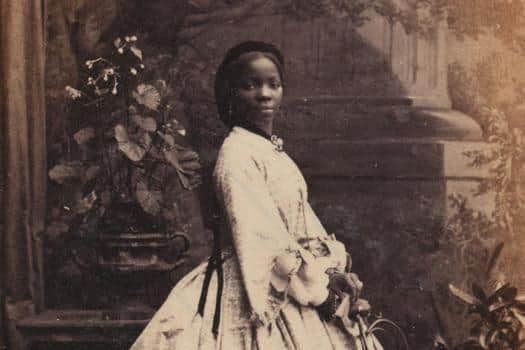

Advertisement
Hide AdAdvertisement
Hide Adinjustice of women not being able to vote, Minnie joined Emmeline Pankhurst’s WSPU (Women’s Social and Political Union) in 1908, later nicknamed the ‘suffragettes’.
By 1910 Minnie had a terraced house in Brighton; she set it up as a suffragette-friendly guest-house and called it ‘Sea View’. Sea View played many roles: holiday accommodation, refuge, gathering place, nerve centre and hub. With Minnie at the helm, Sea View was soon providing comfort, nourishment and home-made bread to the movement’s key activists such as the Pankhursts, Emily Wilding Davis, and Annie Kenney on their trips to Brighton. It was so successful, that no surprise it soon became one of the foremost melting pots of Suffragette activity in the south-east, where ideas, tactics, and – no doubt – support and encouragement could be fermented.
Not everyone was happy with Brighton’s role as suffragette central, however. ‘Sea View’ was sometimes vandalised, once so badly, Minnie simply wrote the words ‘Masculine Logic’ on a piece of paper which she pinned next to a broken window.
Like so many of her sisters in the movement, Minnie was prepared to sacrifice time, comfort and her freedom for the cause. She was arrested twice, and did prison time in 1911 for breaking a Home Office window. A true pioneer for women’s rights, her obituary in the Brighton Herald in 1948 described her as a ‘quiet, gentle, and kindly woman’.
Advertisement
Hide AdAdvertisement
Hide AdIf you’d visited the Brighton Hippodrome for an evening’s entertainment in 1933 you may well have caught two Brighton-born twins, who’d taken America by storm. Violet and Daisy
Hilton were big celebrities in 1920s and ‘30s USA, regularly starring in vaudeville, burlesques and sideshows, performing alongside stars such as Bob Hope and Charlie Chaplin.
Their life began far from the limelight, however, in the back streets of Brighton where they were born to Kate Skinner, an unmarried barmaid. The twins were conjoined and their mother, thinking that this was punishment from God for giving birth out of wedlock, immediately rejected them.
They found a home with Mary Hilton, midwife and landlady of the Queens Arms pub. This wasn’t the compassionate gesture it may have seemed, however, as shrewd Hilton knew that people would pay good money to view the girls and she could get rich by exploiting them as entertainment. In 1916 the girls were taken to Texas and ‘bequeathed’ to Hilton’s daughter and son-in-law, who had them schooled in dance, saxophone and other performance skills, while keeping them captive and pocketing all the money they earned.
Advertisement
Hide AdAdvertisement
Hide AdIn 1931, by now well-known and respected as talented performers, the sisters managed to rid themselves of their manager and broke free, from now on holding the reins of their own careers. When they returned to Brighton in 1933 to headline a show at the Hippodrome, the Hilton twins were well-paid celebrities with adoring fans but their fame was ebbing.
The world was changing. Despite appearing in the films, Freaks (1932) and Chained for Life (1952), audiences were moving on and other forms of entertainment were becoming popular.
Although well established in show-business history in America where plays and films have been made about their lives, they’re less well known in their home town.
Happily, this is about to change thanks to the efforts of local historian Alf Le Flohic who has campaigned to raise funds to erect a blue plaque on the twins’ birthplace in Riley Road.
5. Omoba Aina (aka Sara Forbes Bonetta) 1843 - 1880
Advertisement
Hide AdAdvertisement
Hide AdOf all the women in Brighton’s history, none had a more turbulent journey to Brighton than Yoruba princess, Omoba Aina.
Omoba Aina was born in 1843 in West Africa and aged only eight she was orphaned in warfare and imprisoned by notorious slave-trading King Gezo of Dahomey. In a twist of fate she was discovered by Captain Frederick Forbes of the Royal Navy, who managed to persuade King Gezo to release her by suggesting that she’d make an excellent ‘gift’ for Queen Victoria and that this would reflect well on him. On the crossing to England, Omoba Aina showed the cleverness and spirit that was to captivate the British Royal family when she taught herself to speak English.
Omoba Aina met Queen Victoria in November 1850 at Windsor Castle and she was quick to prove that she going to be more than just a ‘gift’. Despite suddenly finding herself in the heart of regal pomp and power in England, the unfazed girl captivated the Queen, who was thrilled by her intelligence, musical talent and regal manner. The Queen entrusted Omoba Aina to the care of a good family, paid for her education, and regularly welcomed her at Windsor Castle, where she had free run to play with the younger members of the Royal family.
When Omoba Aina arrived in Brighton in August 1862 to stay in the quiet area of Clifton Hill, she had just received an excellent marriage proposal from a wealthy Yoruba businessman from Sierra Leone. It’s questionable whether the young academically gifted woman, after enjoying a degree of independence at the heart of the Royal family would have relished the prospect of becoming a Victorian wife. But Queen Victoria’s views on marriage as beneficial to women were well-known. How could she refuse? Omoba Aina said yes and the luxurious wedding ceremony was the most festive occasions in the town’s year.
Advertisement
Hide AdAdvertisement
Hide AdSadly, following three children and a move to Sierra Leone and then Lagos, Omoba Aina died of TB in her late thirties. Her loss was felt keenly by Queen Victoria, who became official godmother to her first daughter, also named Victoria, and pledged to support her education.
6. Phoebe Hessel 1713 – 1821
In a commanding position in St Nicholas Churchyard in central Brighton there’s a gravestone that tells an amazing story: ‘In Memory of Phoebe Hessel, who was born at Stepney in the Year 1713. She served for many Years as a private Soldier in the 5th Regt. of foot in different parts of Europe and in the Year 1745 fought under the command of the Duke of Cumberland at the Battle of Fontenoy where she received a Bayonet wound in the arm…’
The jaw-dropping parts of this story are the words ‘soldier’ and ‘fought’. If women have only been able to serve in ground combat roles in the armed forces since 2016, this gives Phoebe, embarking on a military career aged fifteen, a 288 year start! Dressed as a man, Phoebe was able to pull the wool over her brothers-in-arms’ eyes for a full seventeen years, until that unfortunate bayonet wound meant she was forced to reveal a little more of her body than usual. Despite Phoebe having played a full fighting role in various battles and skirmishes around Europe, there was no option, once the truth was out, but to discharge her.
After being widowed twice and losing every one of her nine children, the elderly Phoebe found herself scraping a living selling trinkets around Brighton. Somehow, George, Prince of Wales, who often to visited his Marine – and later ‘Royal’ – Pavilion in Brighton, got to know the story of the old woman pedlar who told tales of fooling the army and living the rough and tumble of military life. Always happy to hear a good story, the Prince decided to pay Phoebe a pension of half a guinea a week from 1808, saving her from penury.
Advertisement
Hide AdAdvertisement
Hide AdPhoebe has a second reason for going down in local folklore. One evening, the story goes, she was drinking in the Old Red Lion in nearby Shoreham-by-Sea and overheard a conversation that revealed one of the participants to be none other than James Rooke, a notorious highwayman. Phoebe’s testimony led to the capturing of Rooke and his accomplice, and their subsequent hanging. A grisly end to Rooke but a relief to the people of Brighton and another reason for the town to hold Phoebe to their hearts. No wonder she was invited to attend the town’s celebrations of the coronation of King George IV in 1820 at the grand old age of 107.
See also: Female volunteers at RNLI Brighton come together to celebrate International Women's Day | SussexWorld (sussexexpress.co.uk)
7. Helena Normanton 1882 - 1957
A modest terraced house on Clifton Hill in central Brighton was the childhood home of a woman who made huge steps for women in Law. Helena Normanton, the first woman to practise as a barrister in England, came to the city as a four year old with her newly widowed mother and sister.
The trials of work in a grocery shop, running a boarding house and teaching interrupted the young Helena’s education but her burning ambition was to become a barrister.
Advertisement
Hide AdAdvertisement
Hide AdHelena’s plan was vastly unrealistic. Women weren’t admitted to the Bar and there was simply no such thing as a female barrister. But this didn’t stop her. When her application to study at Middle Temple was predictably rejected, she lodged a petition with the House of Lords. Happily, the Sex Disqualification (Removal) Act 1919 had just passed, and this allowed her to be admitted as a student to the Bar.
Helena’s subsequent career was studded with ‘firsts’ - the first female counsel in the High Court of Justice and the Old Bailey, the first woman to obtain a divorce for her client, the first to lead the prosecution in a murder trial, and, together with Rose Heilbron, among the first two women in England to be appointed as King’s Counsel in 1949. Her appointment never ceased to make waves, especially since, controversially for the time, she chose to keep her maiden name after she married.
Further notoriety ensued when, in 1924, preparing for a trip to the USA, she became the first married woman to be granted a passport in her maiden name.
During her life, Helena took every opportunity to fight for equality, campaigning for women’s right to vote and for married women to be able to hang on to their money and property instead of it being absorbed into their husband’s upon marriage. Helena never forgot her adopted home town of Brighton too and was the first benefactor to donate funds for the establishment of the University of Sussex.
8. Mercedes Gleitze 1900 – 1981
Advertisement
Hide AdAdvertisement
Hide AdAt 2.55am on a foggy morning ninety-four years ago, a Brighton-born woman, clad only in a swimsuit, dipped her toes into the sea in Calais. Her name was Mercedes Gleitze.
On this cold day, during which the sea temperature never rose above fifteen degrees, she was making her eighth attempt to become the first British woman to swim the Channel. The going was tough but over fifteen hours later when Mercedes staggered, triumphant, up the beach in England, her place in history was secure. But it wasn't the last time this keen open swimmer was to have the words 'first' or 'fastest' attached to her name.
In 1928, just a year after her Channel conquest, Mercedes travelled to southern Spain with the aim of becoming the first person ever to swim the notorious Strait of Gibraltar from Tarifa to Morocco. Despite the catalogue of horrors that awaited her – unpredictable and changing currents, plummeting water temperatures, sudden sea fog, vomiting and passing out from excessive consumption of sea water, exhaust fumes from boats etc – Mercedes succeeded, reaching the Moroccan coast in just under thirteen hours.
At a time when female sports celebrities were rare, Mercedes's career took her all over the world, competing in over fifty endurance tests and swimming some of the world's most iconic stretches of water. She drew crowds wherever she went, became the face of the Rolex ‘Oyster’ waterproof watch, and was a newsreel star.
Advertisement
Hide AdAdvertisement
Hide AdCloser to home, she broke the British endurance swimming record in 1933 at Worthing Baths, swimming for a staggering forty-seven hours.
Today, women’s sporting successes are celebrated but not seen as particularly unique. In Mercedes’ time, most people still believed that a woman's place was the home and that exercise could be injurious to a woman's health.
In 2022, Mercedes became the latest Brighton woman to be awarded a blue plaque on her home in Freshfield Road in the city. Her life story has recently been turned into a film, Vindication Swim which is due for release soon. Mercedes was a true pioneer and stuck to her guns!
